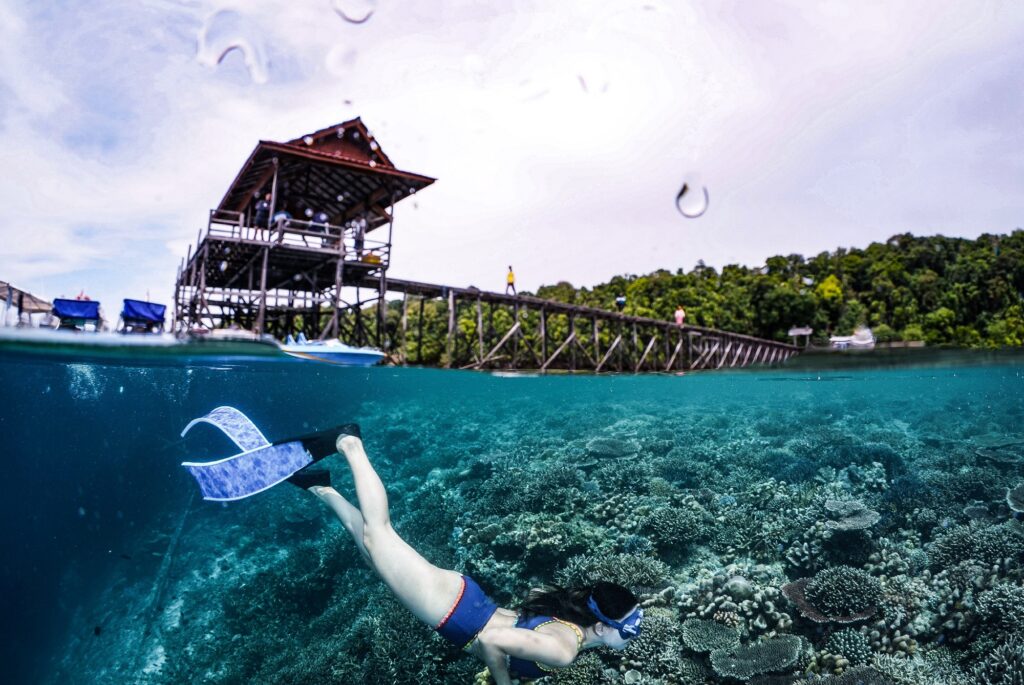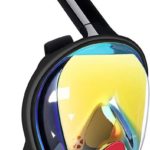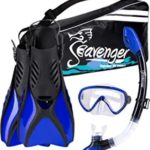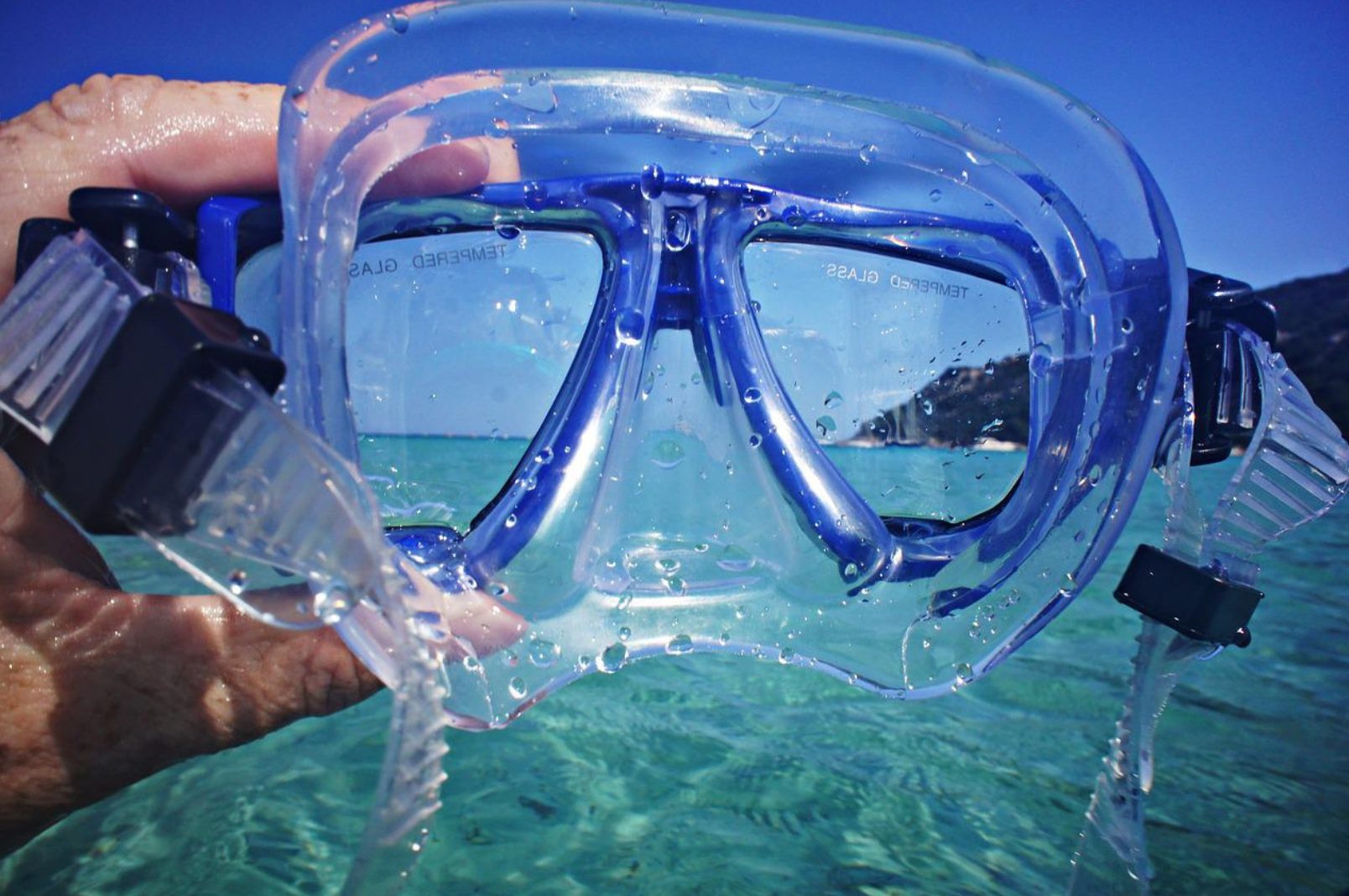The Complete Guide to Snorkel Mask
Introduction:
What is a snorkel mask & Snorkel Mask Working?
This guide will teach you about the working of a snorkel mask and what you need to know before buying one. The quality of your experience with a snorkel mask depends on the size of your face. So, before you purchase a snorkel mask, measure your face for its breadth and height.
Regarding snorkeling, many people are unaware of the various types of masks available and how they work.
It is worth reading up on those who have never taken a snorkel mask out on the water before and understand how they work. If done correctly, a snorkel mask can make for an enjoyable snorkeling experience for you and your family.
To know which type of mask is best for you?
It is essential to understand what these masks do and how they work. Many people ignore the significance of keeping their equipment clean. This is one of the vital parts of having fun with your friends.
Firstly, rinse your snorkeling gear with fresh water and leave it in the sun to dry. This ensures that no germs are present on your equipment.
Secondly, you should put a small amount of antibacterial soap into a bucket of water and soak all your gear in there for about 10 minutes. This will remove all the grime from your gear.
Finally, rinse everything off and let it air dry before packing it back up for next time! The equipment you use on your snorkeling trips can be a breeding ground for various germs and bacteria. If you don’t clean it correctly, it will come back to haunt you.
So how do you clean it?
Here are some steps to follow:
- Rinse with fresh water after each use.
- Use a toothbrush or other brush on all parts where there might be dirt.
- Soak in bleach water for 15 minutes or soak in vinegar water for 10 minutes, then rinse again.
- Dry your gear before storing it away. Please keep it in an airy place with no mold or mildew.
The snorkeling gear can be pretty expensive, and this will ensure that your investment lasts long. Some people might not know, but snorkeling gear is one of the dirtiest items in your travel bag.
The mask, snorkel, and fins are at high risk of developing bacteria that can cause skin and respiratory issues. Over time, the parts of your gear will get grimy from salt water and sand from the ocean floor.
When you’re cleaning these pieces of equipment, it’s essential to make sure you remove any loose particles before storage or use them with fresh water.
Once they’ve dried off, there isn’t a chance they’ll drop anything harmful onto anything else. You can put them back in their place, so they’re ready for your next snorkeling adventure!
A snorkel mask is a face mask. It allows you to breathe underwater using the same surface area as your mouth and nose. The breathing tube is present near the top of the mask and reaches over or around your head.
A scuba face mask is often used for scuba diving because it covers more than a snorkel mask. It is best for deep water dives or diving where an oxygen tank is required. This type of facemask also has breathing tubes at both ends. So, it’s easier for an alternate air supply when necessary.
The snorkel mask allows you to breathe underwater using a tube over the mouth and nose.
A scuba mask has a long breathing tube reaching the water’s surface or an air compressor on shore. This mask can be made from any material, providing enough strength to seal tightly against a diver’s face. It also prevents water from entering while allowing easy access to the eyes, mouth, nose, and ears.
A snorkel mask is an underwater breathing gear that allows people to breathe while under the water. They let you take in air through a tube. Scuba divers often use them to take breaks from swimming and by, snorkelers, and anyone else who wants to spend time underwater without using a full-face mask.
Snorkel masks allow air passage through a snorkel tube that connects to an air chamber inside the mask. When submerged, water enters through an opening at the top of the section, creating airspace below the surface where you can breathe. Some masks have valves on their underside that allow faster water exiting when necessary. At the same time, others have valves on their top for easier equalizing during dives.
What does the inside of a snorkel mask look like?
The snorkel mask has an airtight chamber for the user’s nose and mouth. This lets them breathe through their mouth and nose but keeps water from entering the mask.
When we dive, water pressure increases as we go deeper. This pressure increases the air volume in the masks and can force water into them via the breathing tube.
A snorkel mask is an underwater breathing apparatus covering the nose and mouth and allowing the user to breathe from the air pocket on the top. A snorkel mask is a must for any diver or swimmer who wants to explore underwater.
This article will focus on the inside of a snorkel mask. It will also explore how this design affects our ability to breathe and what its benefits are, and its disadvantages.
The inside of a snorkel mask has three parts:
- An inner tube (made out of silicone)
- An outer crown (made out of silicone)
- An anti-fog lens (made out of plastic)
The inner tube creates the air pocket by sealing over your mouth and nose area, while the outer crown fits snugly.
The breathing tube, and how does it connect to the air tank?
Inside the snorkel mask is an airtight chamber for the user’s nose and mouth. This lets them breathe through their mouth and nose but keeps water from entering the mask.
A snorkel mask is designed to reduce the volume of water that enters the mask. When we dive, water pressure increases as we go deeper, increasing the air volume in the masks and can force water into them via the breathing tube.
Snorkel masks are usually made with a large face plate that fills up more volume than necessary. This reduces water coming in through the breathing tube and significant gaps at the edge of the face plate.
A snorkel mask is an underwater breathing apparatus covering the nose and mouth and allowing the user to breathe from the air pocket on the top. A snorkel mask is a must for any diver or swimmer who wants to explore underwater.
This article will focus on the inside of a snorkel mask. It will also explore how this design affects our ability to breathe, its benefits, and its disadvantages.
The inside of a snorkel mask has three parts:
- An inner tube (made out of silicone)
- An outer crown (made out of silicone)
- An anti-fog lens (made out of plastic)
The inner tube creates the air pocket by sealing over your mouth and nose area, while the outer crown fits snugly.
The snorkel tube connects to the air tank when you’re out in the water and need to breathe. The snorkel tube system has a flexible mouthpiece and a tube that goes down to the diver’s air tank. The mouthpiece has a valve system so no water can get in when you take your mouth off. This is also important because some people have allergies and might not want water from their masks or snorkels.
The snorkel tube system contains the tube that connects to the snorkel mouthpiece, the mouthpiece, and a valve assembly. The snorkel tube system is one of the essential parts of any mask. It is an important device that provides reliable communication between mask and diver.
Breathing tubes are made of silicone, rubber, or a hard-plastic material. They can be single or dual-lumen tubes with an assembled length of 70-76 centimeters to allow full chest expansion during inhalations.
In the introduction, I have described the roles of a breathing tube, its parts, and its connection with masks. The breathing tube is essential to a snorkel set because it allows you to breathe while submerged. This tube connects to an air tank that provides oxygen and keeps the water out.
It has an opening that goes over your mouth and a valve that lets air in only when you breathe, ensuring that water will not enter your airway when you are underwater.
What are some different types of best practices for packing your masks after every dive?
Packing and storing your masks after every dive or use is essential to maintain the quality of the mask. Therefore, knowing how to pack and keep your masks is necessary to prolong their life.
There are a few different best practices for packing and storing your masks after every dive or use that you can follow. The first one is by using a mask bag. The Mask bag protects the mask from dirt, dust, water, and other harmful substances. The second type of best practice is to use a hard case or soft case for storing the masks. The third type of best practice is to use a plastic bag with all the air out before sealing it up tight with tape to be waterproof.
Conclusion:
Many people are unaware of the various types of masks and working snorkel masks. If done correctly, a snorkel mask can make for an enjoyable snorkeling experience. The size of your face influences the quality of your experience; measure your face before purchasing one. A snorkel mask allows you to breathe underwater using a tube over the mouth and nose. A scuba mask has a long breathing tube reaching the water’s surface or an air compressor on shore.
This mask can be made from any material providing enough strength to seal tightly against a diver’s face. Inside the snorkel mask is an airtight chamber for the user’s nose and mouth. This lets them breathe through their mouth and nose but keeps water from entering the mask. Snorkel masks are a must for any diver or swimmer who wants to explore underwater. Snorkel masks are designed to reduce the volume of water that enters the mask.
This reduces water coming in through the breathing tube and gaps at the edge of the face plate. The inside of a snorkel mask has three parts – an inner tube, an outer crown, and an anti-fog lens. The snorkel tube connects to an air tank that provides oxygen and keeps the water out. The mouthpiece has a valve system so no water can get in when you take your mouth off. Knowing how to pack and keep your masks is necessary to prolong their life.






